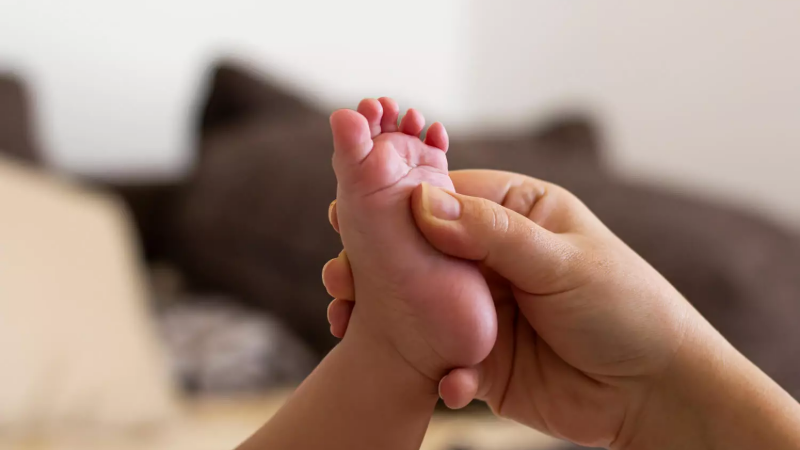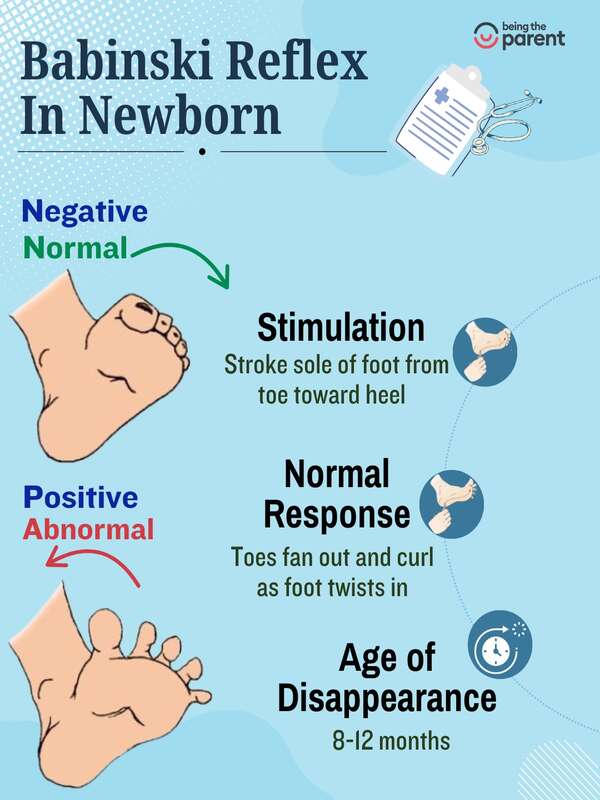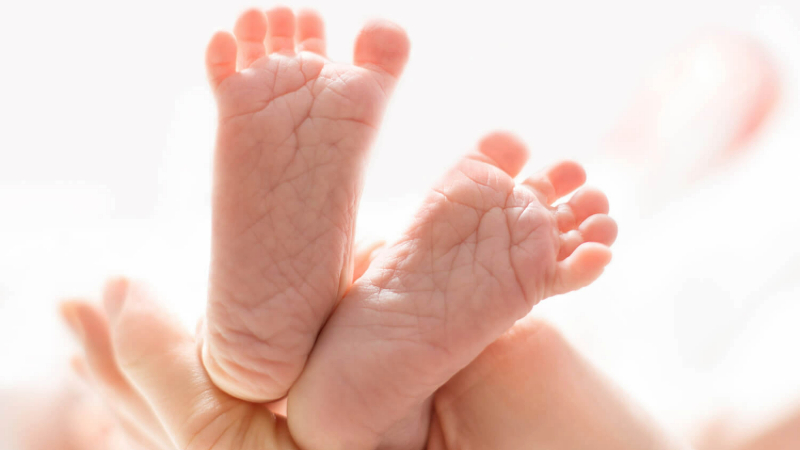
It is common for an infant to communicate through several types of reflexes. Their body shows signs of responding to any stimulus. It can be your finger, soft strokes underneath the palm, trying to crawl, etc. Once the body senses any stimulus, it will instantly react. One such normal reflex is the Babinski reflex in Babies, where your baby’s toe moves upwards while other fingers fan out when touched on their footsole. An irregular response or no response may require the doctor’s attention.
Reflexes in babies help doctors understand their neurological health. It further helps in understanding whether the response aligns with the expected standards. While there is nothing wrong with this form of reflex action in infants, checking for abnormal signs will help identify any neurological problems. In this article, we discuss all about the Babinski reflex in newborns.
What is Babinski Reflex in Newborns?
In infants, the spinal cord and backbone don’t develop completely. As a result, proper neurological testing must be done to ensure that the electrical impulse transmission to and from the brain isn’t getting affected.
In infants, the cortical spinal tract connects the lower limbs to the brain. The Babinski reflex examines the functioning of this tract. If the results do not match those expected, doctors take appropriate measures to correct the neurological problems.
How To Test Babinski Reflex – Positive & Negative

Before proceeding further, we would like to focus on the appropriate steps for checking Babinski reflexes in infants.
- First, lay your baby flat on his back.
- Now, hold one of his legs softly with one hand.
- Use the other hand to stroke the plantar surface of his foot (the plantar is the foot’s sole).
- Start from the heel, move along a slightly inclined line till the top of the foot, and then move outward.
Signs of Babinski Reflex in Newborns?
Once you follow the steps mentioned above, your baby’s nervous system will show a certain kind of response. In a normal condition, you can easily identify the Babinski sign if
- The big toe moves in the backward direction slightly.
- All other four toes will spread or fan out, with the little toe inclined at the front.
- You can see a subtle plantar flexion at the top corner in some cases.
As you stroke the plantar surface, this is the expected behavior you should watch. Doctors also use these same signs to check whether the cortical spinal tract is working expectedly or not.
It is important to identify any sign of irregularity at the earliest because a positive Babinski sign means not having proper neural coordination and may need the doctor’s attention as early as possible.
When to Test For Babinski Reflex in Babies?

There is no fixed time for checking the Babinski reflex in babies. When your baby is about two to two-and-a-half months old, you can do it. The approximate time till this sign usually lasts for two years of age. If the Babinski signs positive condition lasts two years, then there is a high chance that your child is suffering from neurological problems.
As your infant grows, you can check for the Babinski reflex to ensure that neurological growth is as expected. If not, you should visit a doctor.
[Read: Stepping Reflex in Babies]
What Causes Abnormal Babinski Reflex in Babies?
The Babinski reflex is the best way to test whether the neurological system is developing properly or not in an infant. But sometimes, you may find your baby not responding to the gentle strokes, no matter how many times you do so. This is a sign of an abnormal Babinski reflex.
In most cases, the abnormality can happen due to improper neural coordination of the brain and limbs. As the electrical impulses delay reaching the nerve ends of your infant’s feet, you won’t be able to see the response immediately.
Even if the response time is longer and your infant’s feet have shown signs of dorsal and frontal flexion, we cannot call the Babinski reflex normal. Delayed response means that the neurons haven’t developed fully or somehow failed to transmit the electrical impulses.
Apart from this, there are other causes of abnormal Babinski reflexes. Some of them include
- Brain tumor sometimes causes abnormal Babinski reflexes.
- Any injury in the spinal cord or brain can cause abnormal plantar reflexes.
- Sometimes, congenital diseases like sickle cell anemia can also result in a Babinski positive sign.
- Amyotrophic lateral sclerosis can sometimes cause irregular reflexes in infants.
When is Babinski Reflex Abnormal?

To check abnormalities in the Babinski reflexes, you need to notice certain symptoms. Only then will you be able to know whether your infant is suffering from neurological problems.
The following are some ways in which you can detect irregularities in your baby.
- The big toe is not moving in the dorsal direction after you stroke your baby’s footsole.
- After stroking the sole, if the rest of the fingers don’t flex in the ventral direction, it symbolizes Babinski sign positive.
- If the fingers are bent on the respective sides, but the top corner of the feet is not flexing, it also denotes an irregular plantar reflex.
Your doctor may treat a positive Babinski reflex baby by analyzing and diagnosing the underlying condition that is causing the condition.
When Should You Consider Meeting a Doctor?
You should meet a doctor if you think your baby is not delineating appropriate results after you have stroked your infant’s sole. It’s better not to delay because that can cause further problems in your infant’s neurological system. Also, if you still see the Babinski reflex in your baby after he is two years of age, you should immediately consult the doctor.
While the Babinski reflex is a normal phenomenon in most infants, irregularities in the responses may show neurological problems. This is why you should look for the signs and check whether they are normal or not. If you detect any abnormality like irregular flexion of fingers, no response, and more, you must consult your doctor at the earliest.
[Read : When Will My Baby Develop The Pincer Grasp?]
FAQ’s
1. What Does a Positive Babinski Reflex Mean?
A positive Babinski reflex is a condition when your two-year-old baby still shows the signs. It happens due to a wide range of problems, ranging from brain tumors to injuries in the brain. So, it would be best if you keep a lookout for any visible symptoms of positive Babinski reflex to take care of your child properly.
2. At What Age Does the Babinski Reflex Change?
Usually, the Babinski reflex lasts from two months age to two years. As your child continues to grow, you will be able to differentiate between the flexion of fingers properly. You must ensure to check whether the Babinski reflexes have changed or not according to the age of your infant.
Read Also: Startle Reflex in Babies – Causes And Treatment

